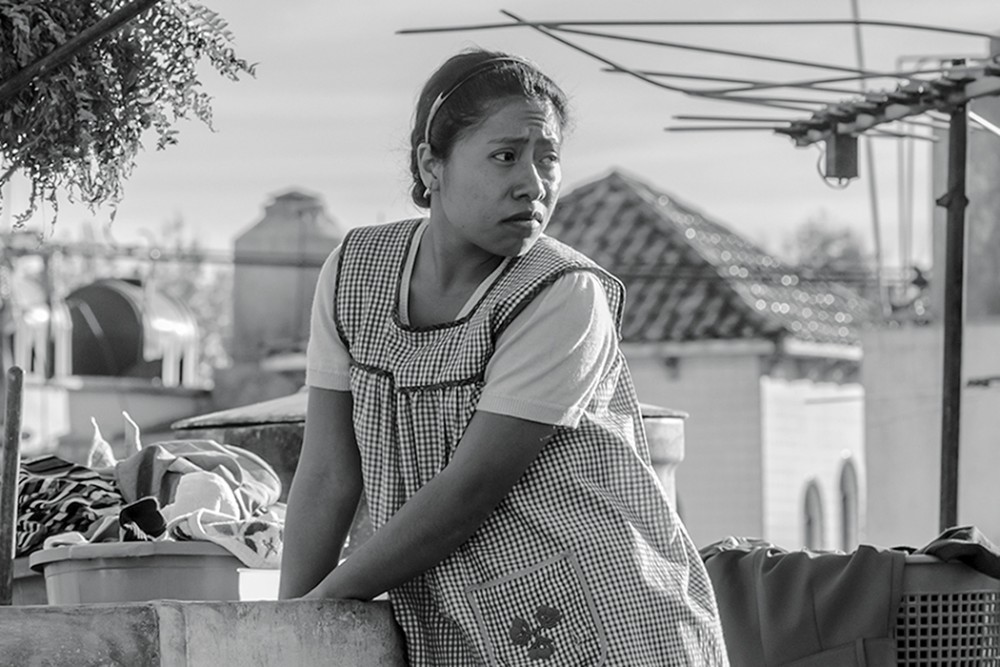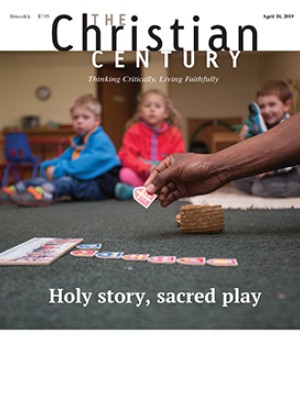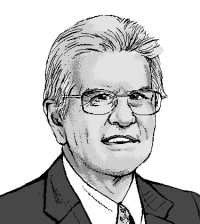Mixtec people and their voices
Behind Roma is a complex history of indigenous lives and faiths.

Alfonso Cuarón’s splendid film Roma has been universally praised as a major work of cinema, a triumph of cinematography no less than acting, and Cuarón himself won the Academy Award for Best Director. But the film also raises some issues about how we read history—issues with potent religious implications.
Roma tells the story of an upper-middle-class family in Mexico City in the 1970s, focusing on their housemaid, Cleo, played by Yalitza Aparicio. The family loves Cleo and treats her generously. She is their muchacha, their “girl.” But there is never any doubt that they expect her to serve, because that is what women like her do for people like them. In this way, the film is richly informative about their assumptions concerning class, race, and gender.
Read our latest issue or browse back issues.
Cleo is a woman of the lower class, a rural migrant who is also a member of an indigenous people, a Mixtec. Watching her interactions with the family, we never forget that this is a tale about race, racial hierarchy, and racial privilege—about privileged elites who look and behave in ways we think of as totally European, with servants who are clearly of Indian features and ancestry.
For all its undoubted qualities as a film, Roma raises concerns that are widely acknowledged in the United States, where a solid consensus holds that whites cannot and should not serve as voices for black or minority experience. Should the same rules not apply to prosperous and lighter-skinned Latin Americans interpreting indigenous lives on their behalf, albeit with the noblest of intentions? Should the Cleo of Roma not be allowed to speak with her own voice, as opposed to being presented by a very talented film director?
We easily forget that tens of millions of Latin Americans today are not only of Native descent but strongly retain a traditional language and culture. Mexico today has 125 million people, and perhaps 9 million of those speak an indigenous language such as Mixtec. In all, around 25 million Mexicans identify as indigenous. Historically, these Native Mexicans were subjected to conditions of servitude and peonage barely distinguishable from slavery. Mexico long retained a system of formal caste classification that closely resembled the system of racial discrimination in the United States. Although those legal disabilities officially vanished in the early 20th century following the revolution, Native peoples in recent times have regularly been targeted by repression, massacres, and disappearances.
Looking at a larger canvas, over 70 million indigenous people live in the Americas, North and South. The Mexican contingent (25 million) is by far the largest, followed by 10 million in Bolivia, 6 million each in Peru and Guatemala, and 4.5 million in Ecuador. Repeatedly through the centuries, revolutions and civil wars in many Latin American lands involved a strong racial theme, to the point that some outbreaks would better be considered as racial conflicts, even as latter-day Indian Wars. Such was the case in Guatemala in the 1980s. And at exactly the time in which Roma is set, in the early 1970s, Mexico was fighting a vicious—if now largely forgotten—Dirty War, with disappearances and murders running into the thousands. Savage violence occurred in the states of Oaxaca and Guerrero, which form part of the Mixtec heartland, La Mixteca.
It is difficult to understand the modern religious history of Latin America without taking that ethnic angle into full consideration. In many areas of Latin America, the recent expansion of Protestant and Pentecostal congregations—the “Southern Reformation”—involves indigenous communities, including Mayan people and others in Mexico and Guatemala, and indigenous Andean peoples in Peru and Bolivia. Sometimes evangélico missions have penetrated rural regions, but commonly, indigenous people encountered the new religious beliefs in the cities, where they were forced to move either by poverty or by armed conflict and guerrilla struggles. When those migrants returned to their home villages, they took those beliefs with them. Tragically, this Protestant growth usually reaches the news media only because of battles that erupt with older Catholic communities, over such explosive issues as the veneration of the Virgin and saints or the use of alcohol in village celebrations.
Guatemala today represents one of the main Protestant success stories in the region, with some 40 percent of the population affirming evangelical or Pentecostal beliefs. Protestant churches of various shades have also spread widely in the Mixtec, Zapotec, and Trique lands, usually inspired by returned migrants—individuals very much like Cleo.
If Roma was depicting conditions in a similar family today, the indigenous-language-speaking servants would probably be faithful members of a booming Pentecostal church. In places like that, they would indeed speak out in their own voices. Or as David Martin, a major sociologist of this movement, famously put it: they would speak with tongues of fire.
A version of this article appears in the print edition under the title “Mixtec voices.”







